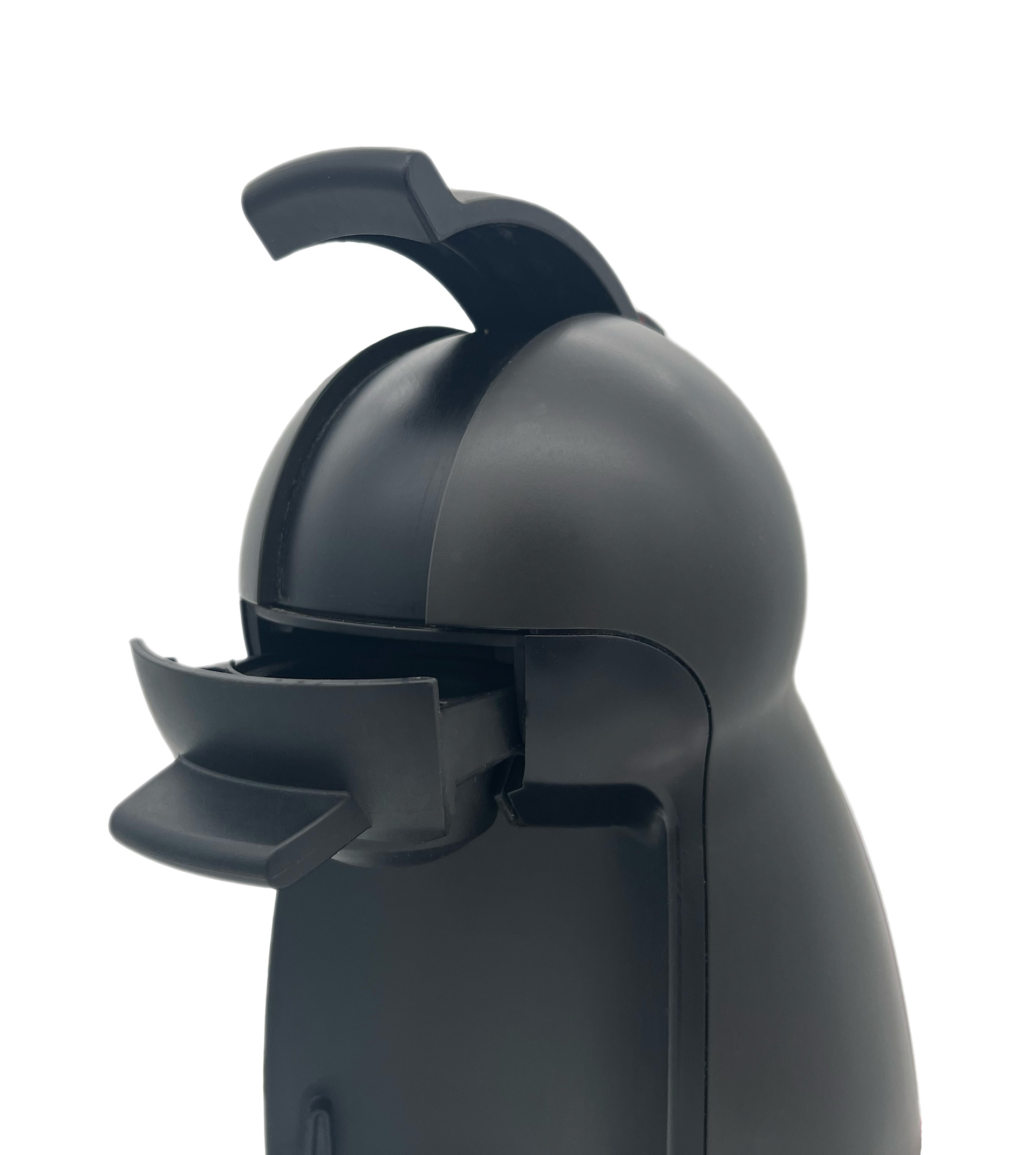Redesign of the Krups Nescafé Dolce Gusto Piccolo Capsule Coffee Machine
Winter Semester 23
Bachelor Semester 1
Task:
Analysing, disassembling and redesigning Products and modelling objects
Tools:
Adobe Illustrator, Adobe InDesign, Fusion 360
The Krups Nescafé Dolce Gusto Piccolo Machine



Positive Features
The coffee machine boasts an anthracite color scheme, offering a modern aesthetic, and provides both hot and cold functionalities to cater to various beverage preferences. Additionally, its tactile control element enhances user experience by ensuring ease of operation.
Negative Features
Despite its appealing features, the machine's construction from cheap plastic compromises its durability and overall quality. Its overly rounded design detracts from its sleekness and may not align with contemporary kitchen aesthetics. Moreover, the small water tank necessitates frequent refills, disrupting the coffee-making process. Notably, the machine exhibits significant wobbling during operation, requiring users to securely hold their cups. Another notable drawback is its manual operation, which demands constant user attention and increases the risk of inconsistent brewing and potential overflow incidents
Suggestions for Improvement
To address these shortcomings, the design could be revamped to feature a sleeker and more contemporary appearance, moving away from excessive rounding. Reconsidering the manual operation in favor of automatic features would enhance user convenience and reliability. Additionally, reinforcing the casing to add weight would stabilize the machine, reducing wobbling during operation.

Concept 2 (chosen concept)
Redesign concept
The chosen design incorporates a push system, whereby users activate the brewing process by engaging with the dispenser. This approach preserves the tactile feedback of manual operation while seamlessly integrating automatic functionality. By adjusting the force applied during the push, the machine accurately determines the desired quantity of coffee to be brewed and dispensed.
This design merges manual interaction with automation, offering users a brewing experience that is both intuitive and customizable.
The final object presents itself in a stretched and cylindrical configuration, featuring an interactive push button on its top, allowing the user to select the desired amount of coffee. This quantity is visualized on the display located on the front of the device. The water tank is detachable and easily accessible for cleaning measures due to its cylindrical shape.




